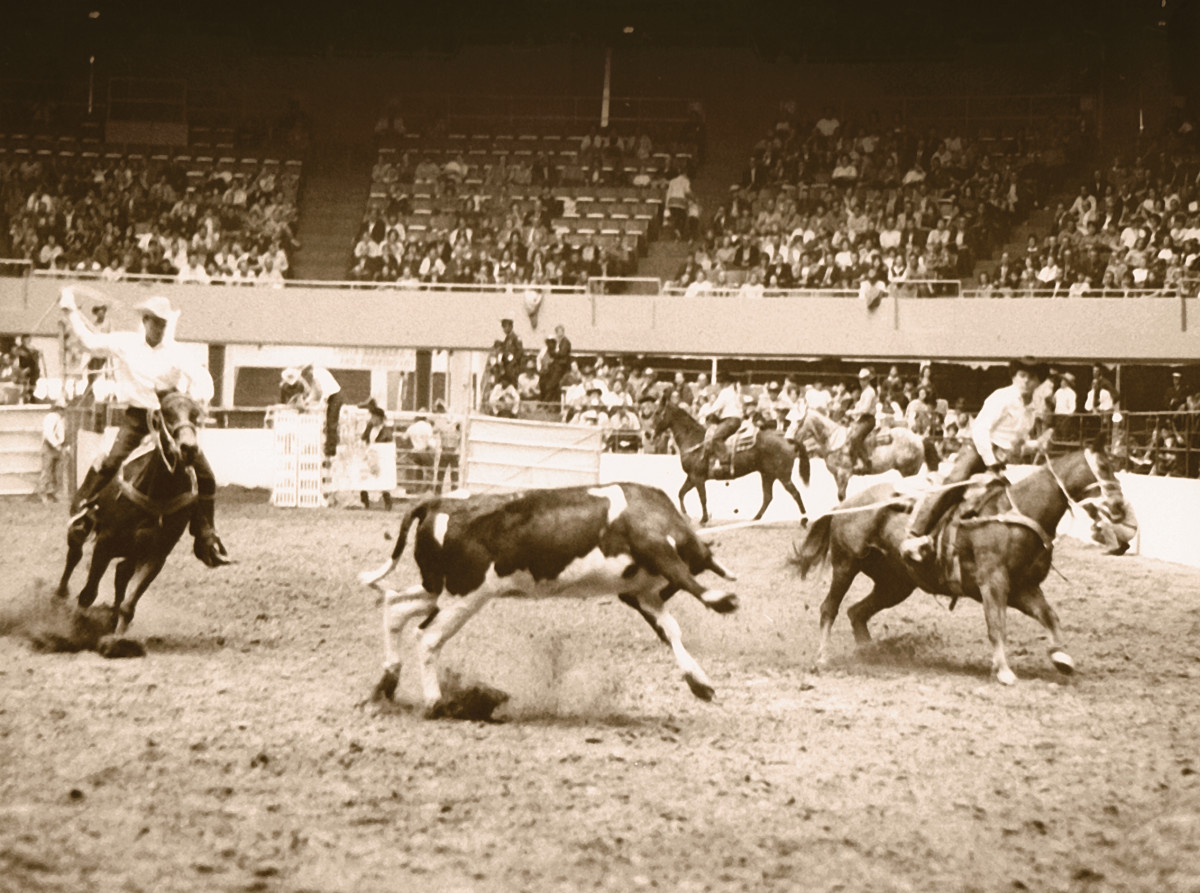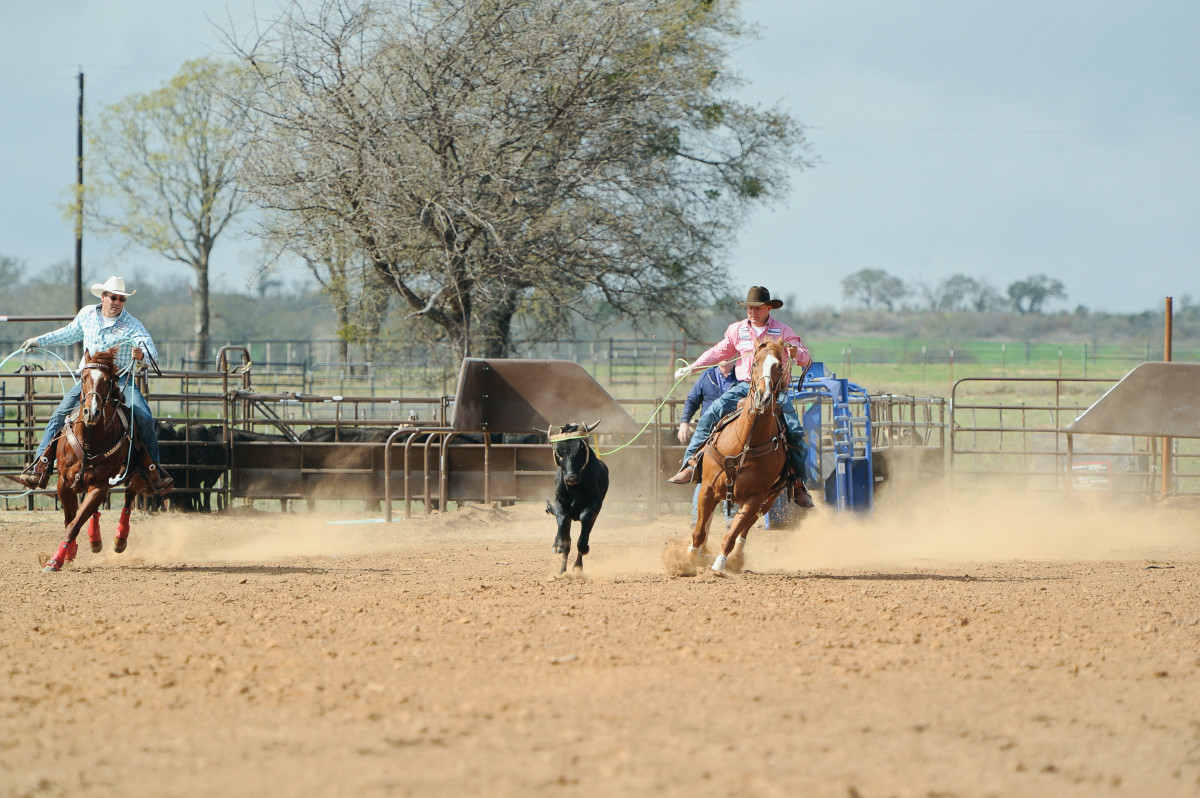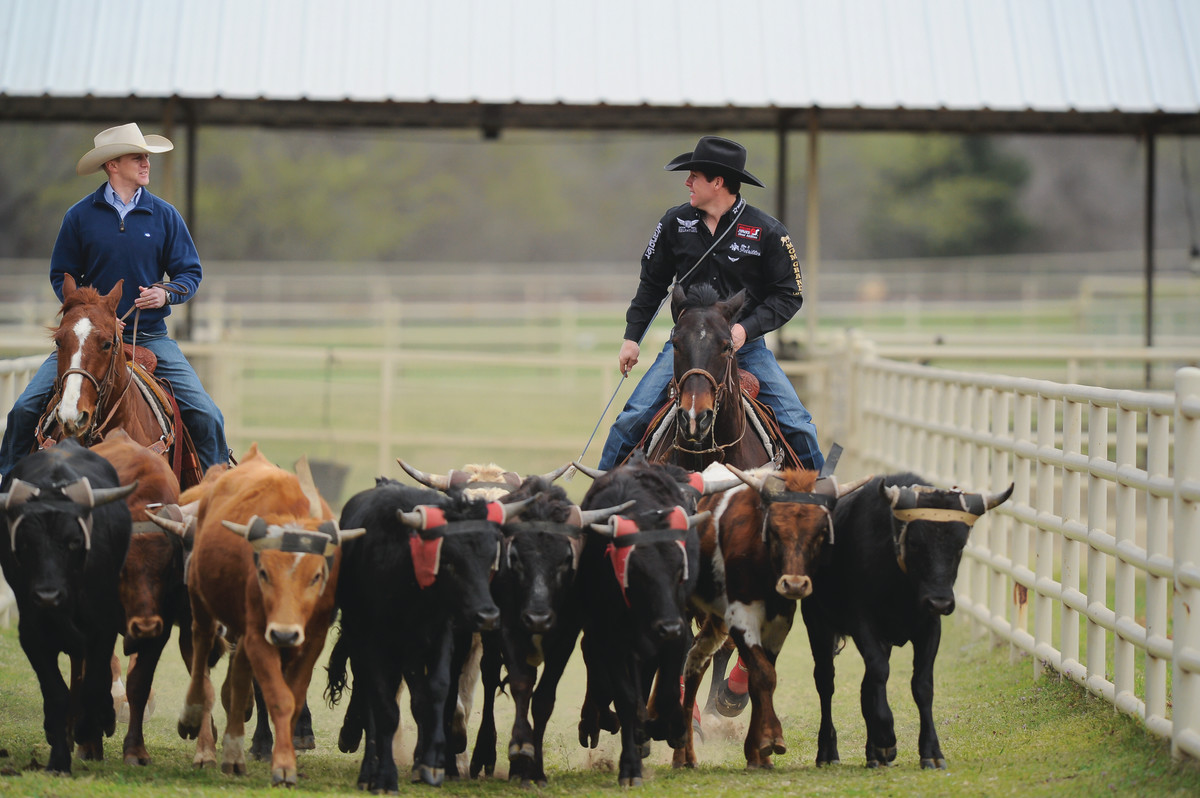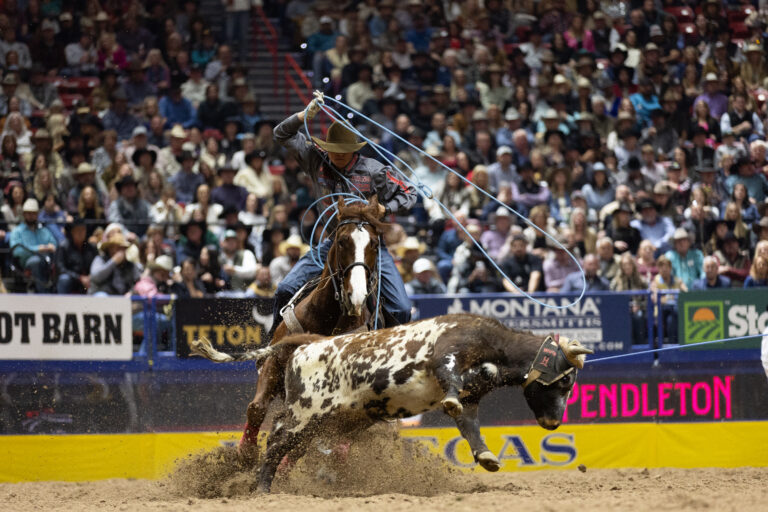Past | Big, Domestic Steers
As recently as 25 years ago, the steers roped at professional rodeos and jackpot ropings were considerably larger than they are today. For the most part, steers were domestic and easily weighed around 750 pounds. In the old team tying days, often the steers were muleys.
“I have a picture on my wall of a steer at the Oakdale 10-steer,” two-time World Champion Heeler Walt Woodard said. “He’s a Hereford steer, no horn wraps—this was before they started using those—and I’m going to say he weighed over 700 pounds. I show people that picture and say, ‘This is what the steers were like.’ People don’t believe it.”
And in fact, because of the steer size, the game was different then.
[Read: Steer-nomics]
[Read: The 1017 Project: How Roped-Out Steers Feed the Hungry]
“The team roping world I grew up in we were roping those kind of steers and so my swing is slower,” Woodard said. “I always used a real stiff rope and I swung slow. That doesn’t work these days.”
[SHOP: Walt Woodard’s Gear Line]
Walt Woodard Roper Collection 1X1 Sq Corr LNG Shnk 5-1/8″ by Partrade
Rattler GT4 3/8″ Team Rope, 35′
Walt Woodard’s Champion Style Heading DVD
(As an Amazon Associate, we earn from qualifying purchases made through affiliate links.)
“Guys think they’re roping big steers now. Back in the day, head horses weighed 1,350 and heel horses weighed 1,200 and steers weighed 750 pounds,” said World Champion Mike Beers. “The horses nowadays are better. Headers are riding wider and getting better control of the steers. Back in the day, you’d be riding behind those steers, rope and turn off and it’d be all you could do to get them out of there. Thirty years ago you didn’t rope steers on the first hop because you didn’t know if they had a first hop. It’s a whole different ball of wax.”
Woodard quoted Will Rogers, who said something to the effect that the general audience couldn’t appreciate how hard his rope tricks really were.
“It’s hard to appreciate being 9 seconds on a 750 pound steer,” he said. “Man that seems slow today.”

Present | Smaller, Mexican Corrientes
Today, most of the steers roped come from Mexico and weigh in the 500-pound range when roped.
“What they rope now, when I was a kid, were called potentials,” Woodard said. “The steers that we rope now were steers that just got off the truck. They wouldn’t rope steers like that. They hit the ground so much faster. In order to rope these steers, for me, I have to use a little softer rope than I like because there’s no way I can swing it fast enough to keep up with the steers they have today. Plus, the horses are a lot smaller. Guys can head and heel on horses that are a lot smaller now. Nicholas, Matt Sherwood’s horse, there’s no way you could have headed on that horse back in the day.”
Troy Shelley, who produces ropings all over the Southwest, offers economics as the reason cattle have progressively gotten smaller.
[Read: Being Aggressive on Fresh Cattle with Nick Sartain]
“Used to, there were just a few guys off down in Mexico and they would just set the prices,” he said of traders from the United States. “Now that technology has gotten better, the Mexican producers have more access to what stuff is worth and it’s completely changed the whole landscape as far as what they cost and who buys them.
“It’s all about economics,” he went on. “The guys in Mexico buy them and the less feed they put in them, the less money they have in them. There’s a couple of guys down there who are good about feeding, but they’re bringing them younger because they want to get as much money as they can as soon as they can.”
[SHOP: Keeping Cattle Healthy]
Because of these factors, team roping speed records are falling continuously. Tee Woolman and Bobby Harris set the world record of 3.7 seconds in 1986. That mark stood alone for 15 years until Speed and Rich matched it. One day later, Blaine Linaweaver and Jory Levy’s 3.5 broke that record and stood—along with a few others—for 8 years until JoJo LeMond and Randon Adams were 3.4 at the NFR in 2009. That record stood for approximately two minutes until Chad Masters and Jade Corkill went 3.3—a mark that was tied earlier this year in Nacogdoches by Brock Hanson and Ryan Motes.
“All of these changes have been for the best,” Woodard said. “People like to see it fast and they like speed.”

[Read: Elements of Success: Mathews Land & Cattle]
Future | Who Knows?
The general speculation is that because record beef prices are driving the cost of roping steers to new heights, coupled with tighter border crossing regulations on horned cattle coming in from Mexico, steers will likely be bigger—and perhaps sorrier to rope—than in past years.
“I think the Mexican cattle work better and they last longer,” said Troy Shelley. “It has to do with a number of things in terms of the way they’re raised in Mexico that’s impossible to duplicate here. The majority of the Indians and Mexicans that raise them down there in Mexico have five to six cows and they feed them every bite they eat. They turn them out and then bring them in. There’ll be a guy standing out there whipping the cows that don’t belong to him out of the herd so his can eat. They get used to being handled and being around people. In Mexico, they get the calves off the cows at 250 pounds and they have to fend for themselves. It makes a huge difference in how their brain develops.”
Yet, again driven by market factors, increasingly the more affordable roping cattle are domestic.
[Read: Protecting Your Investment in Team Roping Cattle with Austin Robertson]
“I just bought a load of domestic heifers to rope at our summer series here near Riudoso, New Mexico, and I would have never done something like that before,” Shelley said. “I can’t afford the Mexicans and I can’t get them. That’s the biggest part of it.”
So, the end user is looking to squeeze the most out of his investment. Whether it’s turning them into steer wrestling steers, holding them over an extra year to rope or using cattle that have had a completely different background than what ropers are used to, the roping steer of the future will likely be here sooner rather than later.












